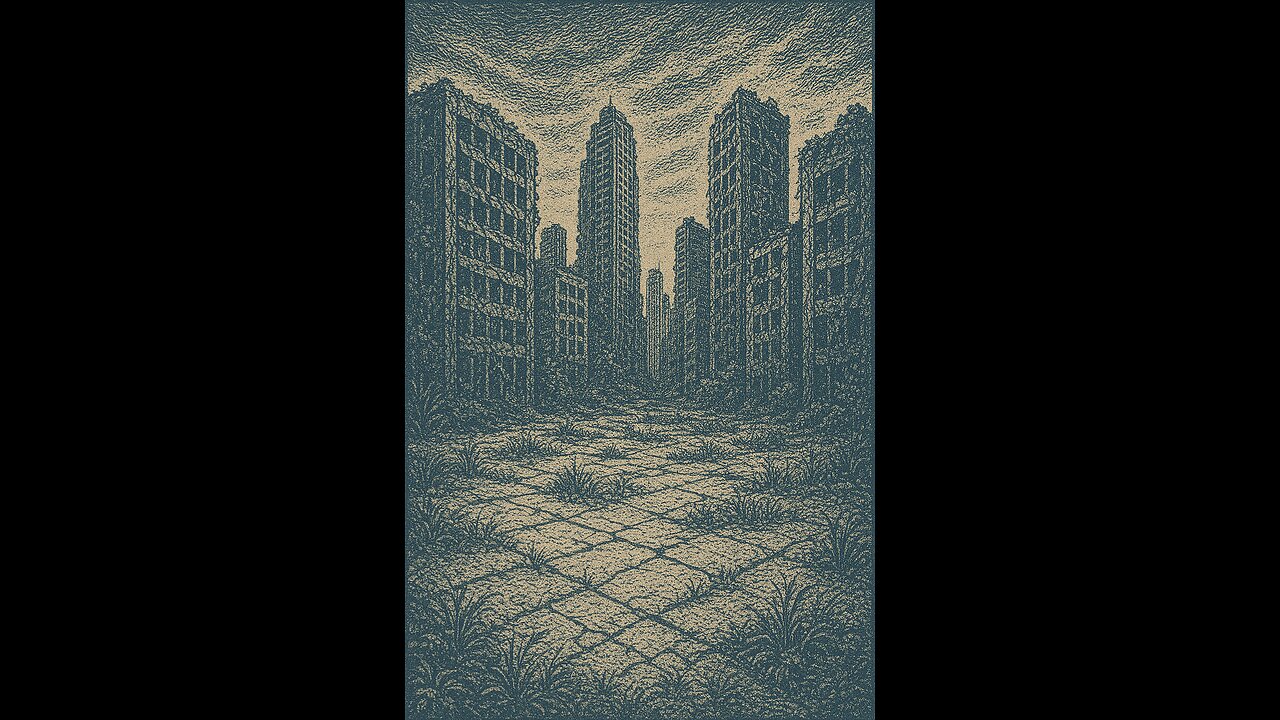Premium Only Content

Nature's Reclamation
In the total absence of humanity, nature would begin reclaiming cities within mere years, with ecological succession unfolding in predictable yet strikingly rapid stages.
Without maintenance, drainage systems would clog, leading to standing water and the establishment of algae, reeds, and mosquitoes.
Pioneer plants such as grasses and dandelions would colonize cracks in asphalt and concrete within 2–5 years, followed by shrubs and opportunistic trees like birch, willow, and ailanthus whose roots accelerate structural decay.
Within 20–50 years, roofs and walls would collapse under moisture and root pressure, creating microhabitats for birds, rodents, and insects.
Urban predators such as foxes, raccoons, and eventually larger mammals would recolonize the landscape as traffic and light pollution vanish.
Over centuries, soil would rebuild from decomposed organic matter, reestablishing a functional ecosystem similar to pre-urban forest or wetland conditions.
Metals would corrode, plastics photodegrade, and concrete crumble, leaving only the most durable glass and stone fragments as remnants—gradually buried beneath layers of vegetation and sediment as the biosphere erases humanity’s architectural footprint.
-
 13:54
13:54
Degenerate Jay
11 hours ago5 Best Superhero Movies To Watch On Halloween
5.94K1 -
 59:03
59:03
NAG Podcast
4 hours agoSarah Fields: BOLDTALK W/Angela Belcamino
8.78K3 -
 1:21:41
1:21:41
Glenn Greenwald
7 hours agoGlenn Takes Your Questions: On the Argentina Bailout, Money in Politics, and More | SYSTEM UPDATE #541
69.6K37 -
 3:10:08
3:10:08
Barry Cunningham
4 hours agoPRESIDENT TRUMP TO USE NUCLEAR OPTION? FOOD STAMPS END! | SHUTDOWN DAY 31
39.3K21 -
 1:06:56
1:06:56
BonginoReport
12 hours agoThe Battle Between Good & Evil w/ Demonologist Rick Hansen - Hayley Caronia (Ep.168)
94.1K31 -
 1:12:57
1:12:57
Kim Iversen
7 hours agoBill Gates Suddenly Says “Don’t Worry About Climate Change”?
85.3K58 -
 1:05:12
1:05:12
Michael Franzese
7 hours agoI Waited 50 Years to Tell You What Happened on Halloween 1975
41.7K15 -
 1:07:15
1:07:15
Candace Show Podcast
7 hours agoINFILTRATION: Charlie Kirk Was Being Tracked For Years. | Candace Ep 256
86.7K317 -
 LIVE
LIVE
Rallied
6 hours ago $2.55 earnedWarzone Solo Challenges then RedSec Domination
190 watching -
 2:34:30
2:34:30
Red Pill News
8 hours agoBoomerang Time - DOJ Investigating BLM Fraud on Red Pill News Live
71.1K14